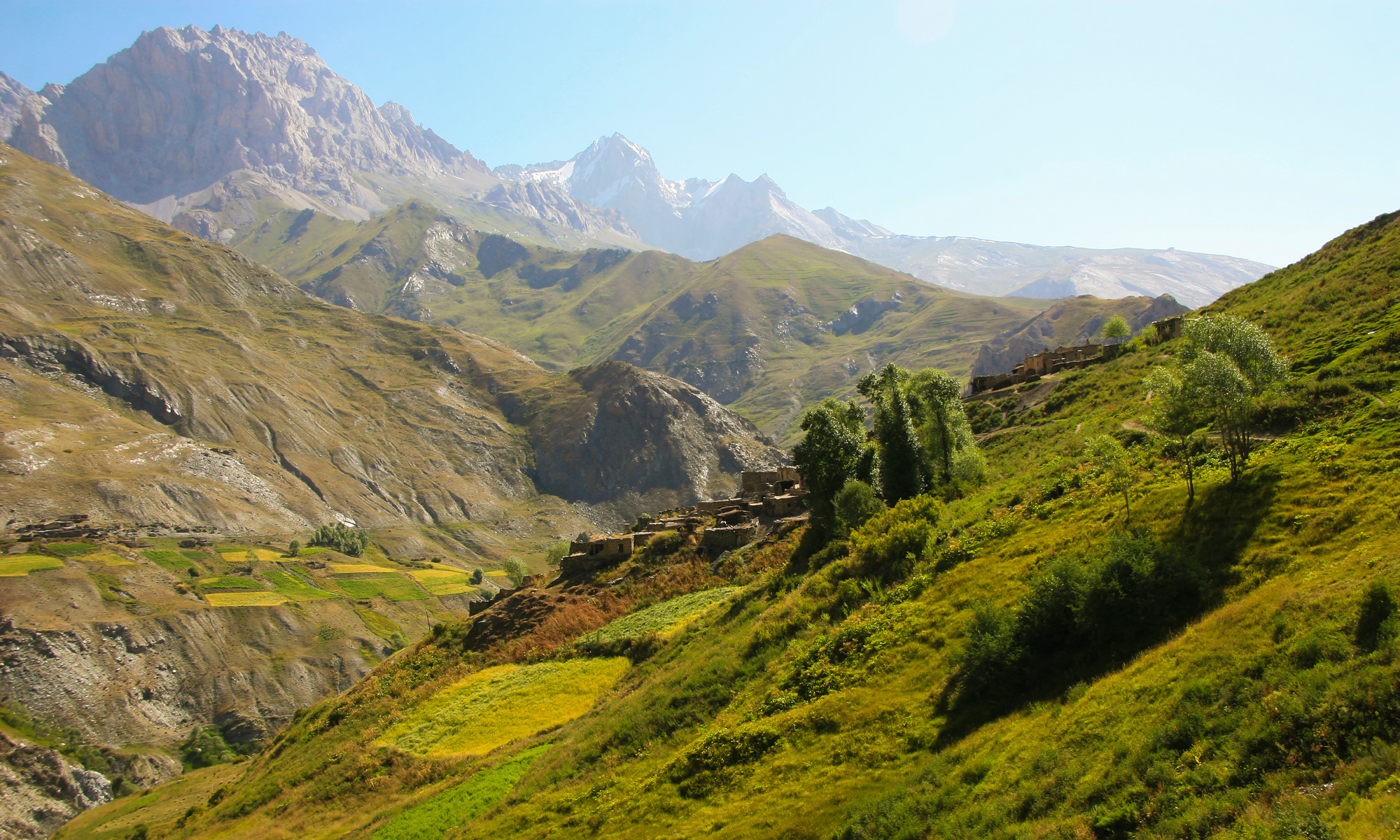Water is sacred in the Yaghnob Valley. It cuts through mountains, nourishes orchards, and carries centuries of memory. But alongside this reverence lies a silent and persistent danger: the water that sustains life is also a carrier of disease.
For many Yaghnobi families—especially the most vulnerable—waterborne illness is not an exception. It is a season, a routine, a cost silently paid.
This is the hidden emergency of the valley: an everyday exposure to sickness masked by the clarity of alpine springs and the rhythm of mountain life.
In most Yaghnobi households, water is collected directly from rivers, creeks, or hand-dug canals. There are no sealed wells. No piped infrastructure. The routes are improvised—streambeds diverted into village centers, sometimes guided by shallow ditches or buckets balanced on worn shoulders.
But these sources are open to contamination at every stage. Livestock drink—and relieve themselves—by the same bends where women wash dishes or fill cooking pots. When ice seals the rivers in winter, villagers break through with axes and melt chunks for daily use. The exposure risks only increase when handling is rushed or hygiene tools are scarce.
People speak of “knowing the clean bend” or “trusting the current,” but even long observation cannot filter out bacteria or parasites. Water safety becomes a gamble made daily—by necessity, not choice.
Across villages surveyed in mid-2000s health assessments, latrines were either rare or entirely absent. In many cases, one pit latrine served multiple families—or no facility existed at all.
Human waste is often left in open fields, away from homes but dangerously close to water sources. When spring floods arrive or thaw begins, the runoff contaminates both irrigation lines and drinking water.
Soap is infrequent—carried in from distant markets, if at all—and often rationed for laundry or guests. Basic hygiene materials like diapers, sanitary pads, or cleaning agents are unfamiliar in most households.
“We do not wash our hands,” one resident noted plainly.
“We wash the dishes in the stream. Sometimes the sheep come after us, and we only watch.”
The health consequences are consistent, predictable—and preventable. Gastrointestinal illness is widespread, especially among children, who are vulnerable to dehydration, infection, and malnutrition.
Diarrhea, vomiting, and chronic stomach issues are common enough to be considered part of growing up. In many cases, the symptoms are dismissed as “bad food” or “cold water,” not linked to systemic sanitation issues.
Skin infections, cracked hands, and rashes increase during colder months, when washing becomes more difficult. Without diagnosis or treatment, intestinal parasites likely spread unchecked. Still, there is little complaint—illness is endured as another part of mountain life.
The crisis is compounded by the absence of even the most basic medical resources. In many villages, no one is trained to identify symptoms of waterborne disease. There are no disinfectants. First-aid kits are rare. When medication arrives—usually carried in by travelers—it’s often expired, incomplete, or improperly stored.
Trash, including medical waste, is often buried or burned. Needles, bandages, and empty bottles are found alongside animal remains or household debris. There is no system of disposal—just local improvisation.
Treatment falls back on memory: herbs, hot stones, soot, or mountain flowers boiled into tea. These remedies are not without wisdom—but they were never meant to replace sanitation.
During the Soviet era, mobile clinics and hygiene campaigns occasionally reached Yaghnob. Posters encouraged handwashing. Schoolchildren were taught food safety. Latrines were built. Those programs have since vanished, but echoes remain—faint habits, half-remembered slogans.
In interviews, elders speak of a time when “health lessons came by truck” and when “the nurse came with soap and charts.” Today, those charts have faded, but the need remains.
Perhaps most dangerous of all is the normalization of sickness. When children are always sick, when elders always ache, when water always carries risk—it becomes harder to imagine another way.
Mothers no longer ask why a child is ill—they ask if the fever will pass by morning. A good day is one when no one vomits. A bad day is not an emergency. It is routine.
The tools for change are not complicated. Latrines, basic hygiene kits, clean storage containers, soap, and health training could reshape daily life in Yaghnob. These are not luxuries. They are low-cost investments with high returns—preventing the kind of suffering that drains entire communities.
And yet, no initiative can succeed without trust and participation. Top-down solutions imposed from afar risk failure. What’s needed is local engagement, consistent presence, and a willingness to meet the valley where it is—on its terms.
To preserve Yaghnob’s rivers, traditions, and future, we must first make sure the water does no harm. The streams that once sustained the valley must not be allowed to quietly poison it.
